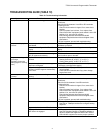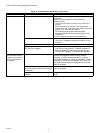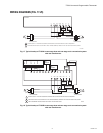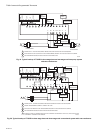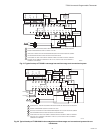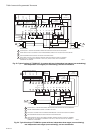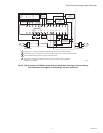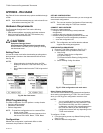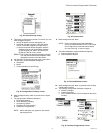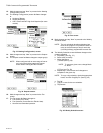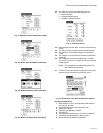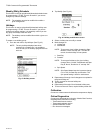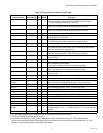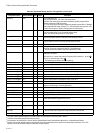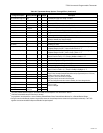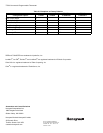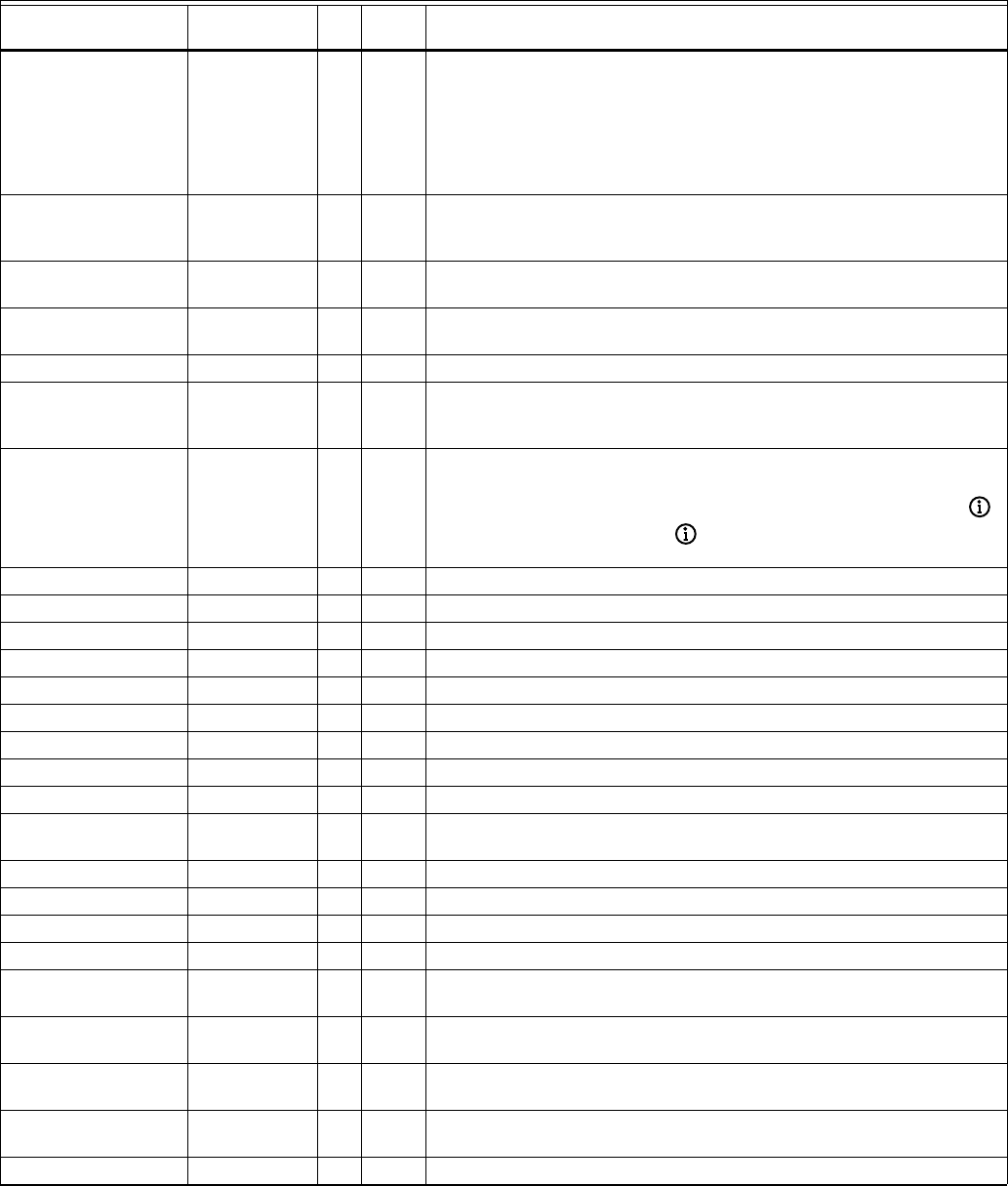
T7350 Commercial Programmable Thermostat
63-2605—06
38
RoomTemp Local X X Room Temperature Input
Local: Use internal sensor; TR21/TR24: Use remote sensor.
TR22/TR23: Use remote sensor with setpoint adjustment capability (requires PDA or
TStatSpec software and USB-TIM/U cable).
T7771: Use remote sensor with setpoint adjustment capability (requires PDA or TStatSpec
software and USB-TIM/U cable); changes T7771 LED and bypass button operation: LED
on means either occupied or bypass, pushing bypass can cancel bypass.
RoomRelHumidity
a
X X Room Relative Humidity Input.
None: No humidity sensor; Local: Use internal humidity sensor;
Remote: Use remote humidity sensor (0-10 Vdc signal).
Discharge AirTemp None X X Discharge Air Temperature Input.
None: No discharge air sensor; or Remote: Remote discharge air sensor.
Outdoor AirTemp None X X Outdoor Air Temperature Input.
None: No outdoor air sensor; or Remote: Remote outdoor air sensor.
OccSensor 0 X X None: No occupancy sensor; or Remote: Remote occupancy sensor.
AuxDO Time of Day X X Auxiliary Contact Operation:
Time of Day, Economizer, Dehumid Hot Gas BP, or Simple Dehumid.
Auxiliary contact not available if heat pump selected with T7350A.
Key Pad (Lockout) Enable All X X Keypad lockout enable/disable through special keypad sequence.
Enable All (0): No lockout.
SetPts & Ovrrd (1): Lockout all keys except: Temporary (Not) Occupied,
,and .
Info Only (2): Lockout all keys except .
The special keypress features are never locked out.
Recovery Heat RampMin 5° F/hr X Minimum heating recovery ramp rate. Range: 0 to 20° F/hr.
Recovery Heat RampMax 8° F/hr X Maximum heating recovery ramp rate. Range: 0 to 20° F/hr.
Recovery Cool RampMin 3° F/hr X Minimum cooling recovery ramp rate. Range: 0 to 20° F/hr.
Recovery Cool RampMax 6° F/hr X Maximum heating recovery ramp rate. Range: 0 to 20° F/hr.
Recovery Heat OAT@Min 0° F X Minimum heating outdoor air temperature. Range: -20 to 100° F.
Recovery Heat OAT@Max 40° F X Maximum heating outdoor air temperature. Range: -20 to 100° F.
Recovery Cool OAT@Min 90° F X Minimum cooling outdoor air temperature. Range: -20 to 100° F.
Recovery Cool OAT@Max 70° F X Maximum cooling outdoor air temperature. Range: -20 to 100° F.
Demand Limit Control Bump 3° F X Demand limit control set point bump. Range: 0 to 10° F.
Power Failure Seq Start 0 (x10 sec) X X Delays start of equipment (fan, heat, cool) after power restored to thermostat.
Range: 0 to 150 seconds (in 10-second increments).
Enable DAT High Limit None X X None: No Discharge Air Temperature (DAT) high limit; Enable: Use DAT High Limit.
Enable DAT Low Limit None X X None: No Discharge Air Temperature (DAT) low limit; Enable: Use DAT Low Limit.
High Limit DAT Setpoint 110° F X Discharge Air Temperature High Limit Setpoint. Range: 65 to 140° F.
Low Limit DAT Setpoint 45° F X Discharge Air Temperature Low Limit Setpoint. Range: 35 to 60° F.
Dehumidification Min On None X X None: No Minimum On Time dehumidification;
Enable: Dehumidification using Minimum On Time.
Dehumidification Min On
Time
5 X Minimum on time used with “Dehumidify Minimum On”. Range: 5 to 15 minutes.
Dehumidification Reset
Temp
None X X None: No Reset dehumidification; Enable: Dehumidification using Reset.
Dehumidification Reset
Temp Setpt
2° F X Amount of reset used with “Dehumidify Reset”. Range: 1 to 5° F.
Must be smaller than occupied zero energy band (ZEB) or standby ZEB.
Dehumidification Reheat None X X None: No Reheat dehumidification; Enable: Dehumidification using Reheat.
Table 20. Thermostat Setup Options Through PDA. (Continued)
Configuration Option Factory Default
a
PDA
Tool CnfgID Description
a
The Factory defaults listed here apply to all subbase models with the exceptions of the items listed in Table 21.
b
12:00 Noon is the default start point when time is unknown.
c
Only Available if user selected one or more of following: Dehumidification Reset, Dehumidification Minimum On, or Dehumidification Reheat.
d
Config ID cannot handle Standby setpoints. Keypad users cannot set Occupied setpoints that violate Not Occupied setpoint relationship. The T7350
algorithm never allows the effective setpoint outside Not Occupied setpoints.



